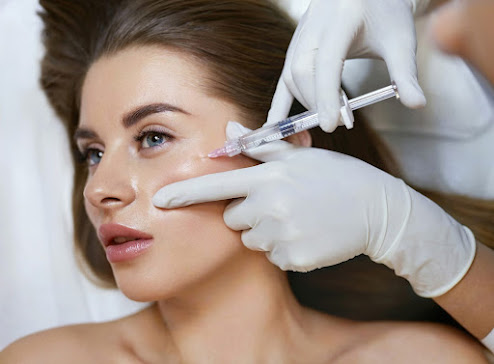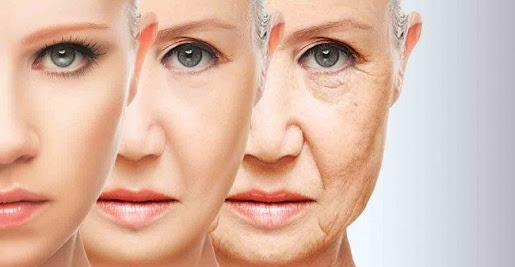Derma Fillers: The Good, The Bad and The Ugly
Dermal fillers are among the less invasive procedures that are gaining popularity, but it can be challenging to understand how they precisely work, what the various products accomplish, and which option is ideal for you. Here is all the information you require.
Dermal fillers are injections that smooth out lines on your face and fill in wrinkles. Dermal fillers come in many different varieties.
Dermal fillers are typically injected by healthcare professionals around your mouth, nose, and eyes. Results from this widespread cosmetic operation can last months or years and are frequently seen immediately away.
Uses for dermal fillers
Your body begins to lose collagen as you get older. All across your body, including in your skin, muscles, bones, and connective tissues, collagen is a vital chemical.
Skin laxity (looseness) and volume loss are brought on by decreased collagen levels in the skin. Skin ages, becomes less elastic, and begins to sag.
Dermal fillers can be used to:
- Add volume to drooping skin.
- Improve the symmetry of the characteristics on your face.
- Fuller cheeks and lips.
- Remove facial creases and wrinkles.
What Are the Misuses of Fillers?
According to the doctors at Stieltjesstraat Rotterdam clinic, you should never use fillers for:
- large-scale body contouring
- Butt or breast enhancements
- Filling in between-muscle areas.
Such improper use of fillers may result in fatalities, severe wounds, or lifelong scarring or disfigurement.
What to anticipate after receiving facial fillers?
Throughout the process
Depending on the filler you choose, a topical treatment may be used to numb the region initially. Some fillers already contain a local anesthetic, eliminating the need for numbing cream.
After sterilizing the region, the medication will be painstakingly injected. You can return to your usual activities shortly after the procedure is finished, which typically takes less than an hour.
While recovering
With injectable fillers, there is typically no noticeable downtime. The majority of plastic surgeons advise avoiding strenuous exercise for 48 hours to promote quicker recovery, but you can typically return to your regular schedule right away.
Around the injection site, there may be some swelling, discomfort, and bruising; however, these side effects will go away in a few days.
What You Should Know About Filler Risks
As per the specialists at Stieltjesstraat Rotterdam clinic, avoid falling for low costs. Dermal fillers purchased online might not be secure. They might be fraudulent, tainted, or hazardous in other ways.
For instance, some of the fillers that are sold online contain hair gel. Injecting non-sterile substances can result in an allergic reaction, an infection, or dead skin cells.
Giving yourself or someone else who is not a doctor or nurse these kinds of shots is equally risky. A blood clot (or embolism) that results in blindness can be a side effect of using the incorrect injection technique, along with swelling, lumpiness, skin cell death, and other symptoms.
What potential negative effects might fillers have?
The hazards involved with non-surgical techniques are real. According to the FDA, the most typical side effects are bruising, redness, soreness, or swelling, all of which should go away after two weeks.
According to the FDA, raised bumps under the skin may occur less frequently in people and may require treatment with drugs, injections, or even surgery.
Although uncommon, filler can unintentionally be injected into a blood vessel, which could result in lifelong blindness or clouded vision.
If your skin turns blue and you experience severe discomfort, you should contact your doctor or go to the emergency room as these could be symptoms that filler is in your bloodstream.
Once more, this is the reason you need to consult a medical professional who has performed the treatment successfully.
Who should stay away from dermal fillers?
The FDA states that there is no evidence that dermal fillers are safe for women who are pregnant or nursing, so if you’ve recently given birth or are expecting a kid, you might want to wait.
And here’s one more thing to think about the doctors at Stieltjesstraat Rotterdam clinicadvise against receiving filler soon before a dental cleaning or other procedure.
These operations put the face under pressure and stretch it, which could lead to fillers being misplaced. During your consultation, you can inquire with your doctor about the best time to schedule any upcoming dental procedures.
What kind of outcomes are possible with dermal fillers?
Depending on the filler type and injection site, the average filler might last anywhere from six months to several years. How long your chosen fillers should last will be able to be determined by your plastic surgeon.
Results may be seen right away. When the swelling goes down and the filler settles, some people may initially feel as though the treatment areas are “overfilled,” although the final appearance may be more realistic.
Recovery
The two most frequent side effects of dermal filler injections are swelling and possible bruising, which can last up to a week to recover from. Dermal fillers are generally safe and effective, and your doctor will explain any potential adverse effects unique to the injection site.
Source: https://businessfig.com/derma-fillers-the-good-the-bad-and-the-ugly/

.jpg)

Comments
Post a Comment